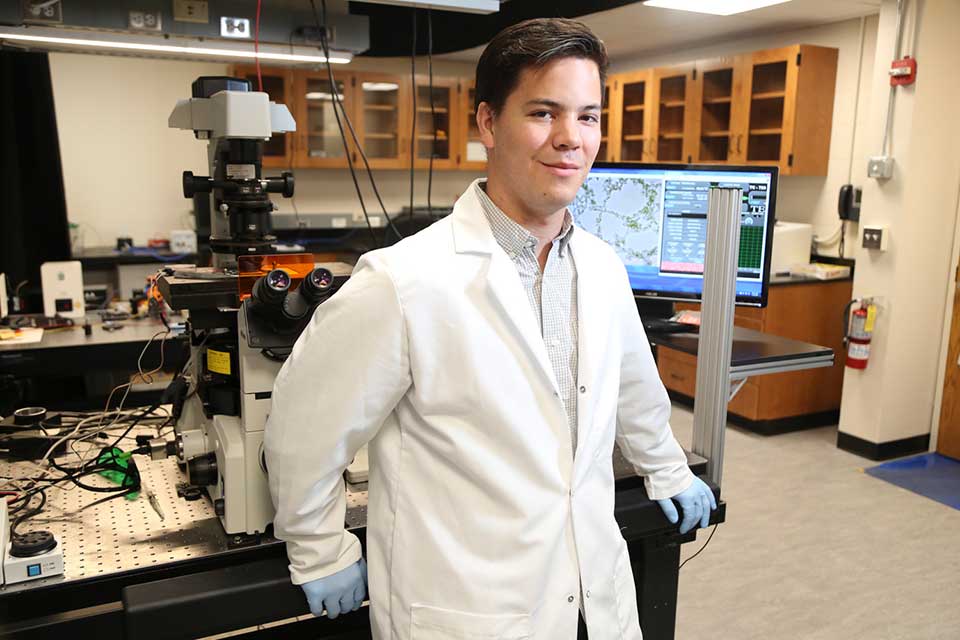Guillermo Narvaez

“Quantitative Study of Linker-Mediated Binding Between DNA-Coated Colloids”
Guillermo Narváez-Paliza*, W. Benjamin Rogers
Brandeis / Physics
Hosted by Rogers' Lab
Abstract
DNA provides a useful tool to control self-assembly of microparticles; not only does it induce self-assembly but it allows the user to specify the way particles interact and bind to each other. Here we study a DNA-coated colloidal system where two non-complementary sequences (A and B) are grafted to polystyrene spheres. A single stranded DNA (ssDNA) linker in solution is used to induce self-assembly. We measure the melting temperatures for a variety of linker lengths (17, 19, 21 and 23 bases in total length) and a range of linker concentrations (1nM~0.8mM). We show that the melting temperature of the material depends on both the length of the linker and the concentration within the sample. A mathematical model is built, assuming local chemical equilibrium and using principles of mass-action, that predicts the yield of aggregation of the system, allowing us to calculate the melting temperature.
The use of linkers brings along multiple advantages that direct-hybridization based micromaterials lack, and new characteristics such as a fluid phase re-entry when increasing the concentration of linkers past a threshold concentration. Linker-mediated systems provide a useful tool for the research of biological and synthetic self-assembly processes, as well as having important potential engineering applications.
Support
SMURF (Summer MRSEC Undergrad Research Fellowship)

